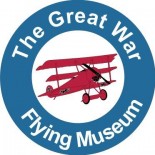| Together with the Camel, the S.E. 5 was the most famous British scout aeroplane of the Great War, and it was unquestionably the best design from the Royal Aircraft Factory. It was just as easy to handle as the Camel was difficult, having inherited many of the “automatic stability” characteristics of the other Factory products. The stationary motor and the marked dihedral robbed the S.E. of much of the Camel’s power of rapid manoeuvre, and it was, in fact, disliked by pilots skilled in the handling of rotary types. On the other hand, supporters claimed that the stability provided a steady gun-platform and that the extra speed, combined with the remarkable diving and zooming qualities, more than compensated for the inferior agility. Whilst the Camel could claim more enemy aircraft on the aggregate, it is significant that many of the leading British Aces scored the majority of their victories whilst flying the type. By October, 1918 over 2900 S.E.s had been delivered. |
|


